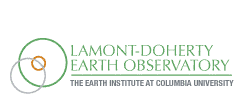

The focus of this project is on the variability of circulation, water mass properties and freshwater distribution in a region that lies north of the Canadian Archipelago and Greenland, extending from the continental shelf into the central Arctic Ocean. This region is just upstream of the freshwater exit points to the North Atlantic Ocean in Nares Strait and Fram Strait. There is evidence that circulation in this region is highly variable on interannual time scales, which may be tied to large-scale climate signals such as the Arctic Oscillation, and results in variability in the export of fresh water to the North Atlantic. This region is covered by thick ice and is difficult to reach by icebreaker, so aircraft operated out of the Canadian military base at Alert are used to obtain data and water samples by lowering a CTD and a small diameter modular rosette through a hole drilled in the ice. Annual hydrographic surveys are carried out using two types of aircraft, a helicopter to obtain close spaced stations across the shelf break and down the continental slope using only a CTD (University of Washington) and a twin otter fixed wing aircraft to obtain courser spaced stations extending into the interior with the CTD/rosette system (Lamont-Doherty Earth Observatory). Up to 12 water samples are collected with the rosette on the Lamont twin otter stations and a surface sample is collected on the helicopter stations. These samples are analyzed for salinity, dissolved oxygen, nutrients, the transient tracers CFC-11, CFC-12, CFC-113, SF6, tritium, He-3, and I-129, the O-18:O-16 ratio and Ba. The transient tracers provide information on the circulation
time scale and salinity, oxygen, nutrients, oxygen isotopes and barium provide information on the freshwater content and sources, and variability in water mass composition. The backbone of the survey is a line of stations extending from the continental shelf to the North Pole and stations are taken to the east and west of this line, time permitting. This survey is closely coordinated with the twin otter survey carried out by the North Pole Environmental Observatory program each year.
The CTD/Rosette consists of 4-bottle sample modules that are stacked over a CTD module. The volume of each of the water bottles is 4 liters. At the end of a cast, the sample modules are placed in coolers and the end caps, which are connected by an epoxy coated stainless steel spring inside the bottle, are secured externally so they cannot open. Bags of snow are placed in the coolers to provide thermal stability close to 0 deg.C and the modules are returned to the base camp for sub sampling. At the base camp water samples for the constituents listed above are drawn into the appropriate containers. Oxygen and salinity samples are measured at the base camp with an automated Winckler titration system and an autosal salinometer respectively. Nutrient samples are frozen and they and the other samples are sent to various laboratories for measurement.
Vertical profiles of CTD and bottle chemistry data collected from the Switchyard region of the Arctic Ocean (between Ellesmere and the North Pole) by Lamont-Doherty Earth Observatory.
Poster presentations
Peter Schlosser
Bill Smethie
Dale Chayes
Richard Perry
Ronny Friedrich
Bob Newton
Hoyle Lee
Anthony Dachille
Eugene Gorman
Bob Williams (subcontract from SIO)
Information on the helicopter stations and the University of Washington component is posted at:
http://psc.apl.washington.edu/switchyard/index.html
Data from and information about the North Pole Environmental Observatory are posted at:
http://psc.apl.washington.edu/northpole/
Data are archived and are available from:
OPP 02-30427, Collaborative Research: Circulation in the Freshwater Switchyard of the Arctic Ocean.
ARC 06-33878, Collaborative Research: A Modular Approach to Building an Arctic Observing System for IPY and Beyond in the Switchyard Region of the Arctic Ocean.
 |
 |
| Cruise Name | Stations | Latitude (N) | Longitude (W) |
|---|---|---|---|
| SwitchYard 2004 TwinOtter | Station 1 | 85.042 N | 66.185 W |
| Station 2 | 86.010 N | 69.233 W | |
| SwitchYard 2005 TwinOtter | Station 2 | 86.250 N | 73.167 W |
| Station 3 | 84.450 N | 65.233 W | |
| Station 4 | 85.083 N | 69.050 W | |
| SwitchYard 2006 TwinOtter | Station 1 | 84.750 N | 64.400 W |
| Station 2 | 84.107 N | 63.299 W | |
| Station 3 | 85.933 N | 68.703 W | |
| SwitchYard 2007 TwinOtter | Station 1 | 88.141 N | 90.724 W |
| Station 2 | 84.161 N | 64.668 W | |
| Station 3 | 84.902 N | 66.461 W | |
| Station 4 | 84.161 N | 64.167 W | |
| Station 5 | 89.161 N | 102.987 W | |
| SwitchYard 2008 TwinOtter | Station 1 | 84.941 N | 67.142 W |
| Station 2 | 85.943 N | 67.509 W | |
| Station 3 | 83.728 N | 65.171 W | |
| Station 4 | 84.094 N | 63.264 W | |
| Station 5 | 87.125 N | 89.794 W | |
| Station 6 | 88.909 N | 87.869 W |